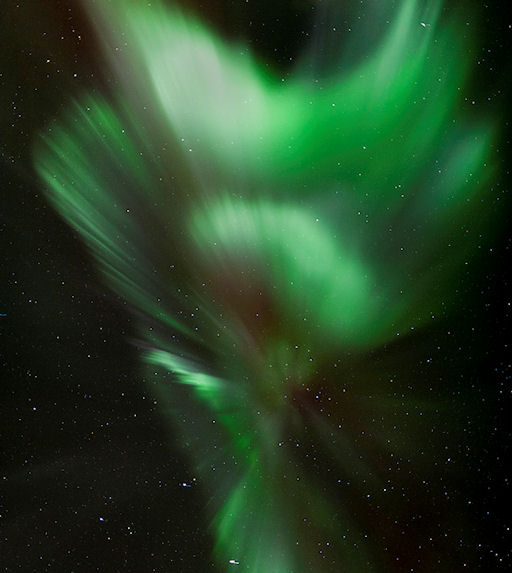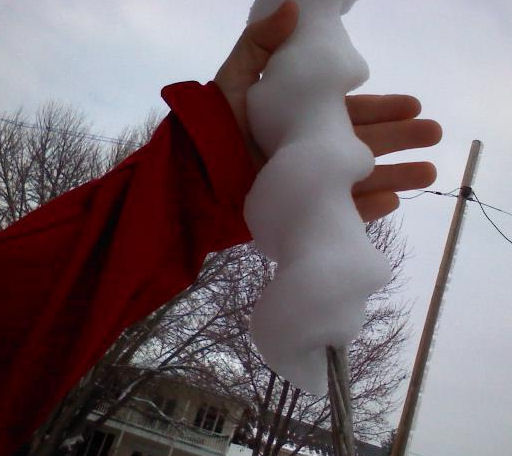Metallic photos of the sun by renowned photographer Greg Piepol bring together the best of art and science. Buy one or a whole set. They make a stellar gift. | | |
SOLAR SAIL FLARES: NASA's first Earth-orbiting solar sail, NanoSail-D, is circling our planet and attracting the attention of sky watchers. Occasionally, sunlight glinting from the sail's reflective fabric produces a flash of light in the night sky. These "solar sail flares" are expected to grow brighter as NanoSail-D descends in the weeks ahead. Get the full story from Science@NASA.
AURORA-BURST: According to the official forecast, the odds of geomagnetic activity on Jan. 31st were less than 10%. That was good enough for Kjetil Skogli of Troms, Norway. "We went out to look in spite of the low expectations--and there it was!" An aurora-burst was in progress directly overhead:

"We didnt have to wait at all," says Skogli. "The show started right away and lasted for more than an hour with a lot of moving green curtains and rays."
The unexpected display was caused by a disturbance in the interplanetary magnetic field (IMF) near Earth. The IMF tilted south, opening a hole in Earth's magnetosphere. Solar wind poured in and ignited the auroras.
More auroras are in the offing. A solar wind stream is heading for Earth, due to arrive on Feb. 2nd and 3rd. NOAA forecasters peg the chances of geomagnetic activity on those dates at 20% to 35%--much better odds than Skogli had. High-latitude sky watchers should be alert for auroras.
January 2011 Aurora Photo Gallery
[previous Januaries: 2010, 2009, 2008, 2007, 2005, 2004]
SNOW SPIRALS: As a winter storm of historic proportions prepares to sweep across the USA later this week, midwesterners should be alert for some unaccustomed sights. One of them is snow spirals. Michael French photographed this specimen in Frederick, Maryland, on Jan. 29th:

"I call them Karra Spirals, after my wife Karra Strickland who discovered them in our yard," says French. "They were all over town, spiraling down the braided metal guy-wires on telephone poles. Here's the curious thing: The wires were spun clockwise, while the snow formations were spun anti-clockwise. The hardened snow spirals were rotated opposite of the metal wire's weave. We also noticed that spirals near the top of the wires were longer (~1 meter) than spirals at the bottom (0.1 - 0.3 meters)--perhaps because of gravity?"
Indeed, the changing wavelength of the spiral suggests gravity played a role in their formation. This could be how heavy snow sags under its own weight when it clings to a braided wire. Why the spirals should oppose the braid, however, is not obvious. Readers with explanations are invited to submit them for consideration.
Solar Eclipse Photo Gallery
[NASA: Hinode Observes Annular Solar Eclipse]

